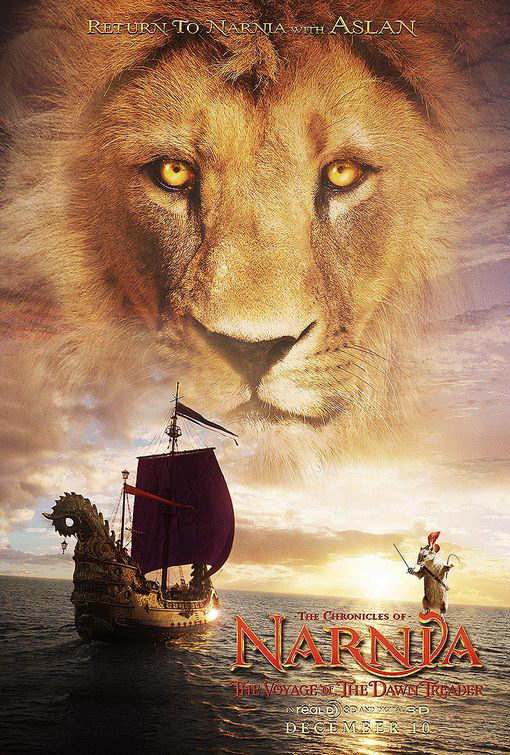Welcome to Tumnus’s Book Shelf where we review any and all books related to the Chronicles of Narnia and CS Lewis. Today’s Review is of Laura Miller’s The Magician’s Book
Title:The Magician’s Book
Author:Laura Miller
Publisher: Little, Brown and Company (December 3, 2008)
ISBN-10:
ISBN-13: 978-0316017633
Summary of the book:
Accredited author Laura Miller’s Magician’s Book, is a skeptic’s attempt to examine the world of Narnia and it’s creator CS Lewis. Starting with her own journey as a reader , Miller details that experience every fan of Narnia remembers the most, the moment they first loved it and how it led them to reading more fantasies.
That time is cut short as she noticed the religious aspects of the books, as well as other aspects of the books she found objectionable. Later on in adult hood she sought to better understand Lewis’ life in hopes of regaining that love.
She also looks extensively at the friendship between CS Lewis and JRR Tolkien as so many biographers are wont to do, and talks with other fantasy authors about Narnia.
Review of the book
The Magician’s Book is one of those rare books that has so much promise, but fails to live up to that potential. Written by Laura Miller, whose credentials include Salon.com, The New York Times, The New York Times Book Review, The LA Times and Time Magazine, the premise of the book is to look at one readers experience in Narnia, the influence Lewis played not just on her but on other authors and look at Lewis’s life. It was also promised that it stay away from focusing on religious aspects of Narnia and look at the books strictly as literature and examine aspects we often over look. There is nothing wrong with that of course, and such scholarship is welcome. To often, so many books that examine Narnia, end up turning the land of Narnia into Jake T. Chick Tract.
From the outset the book “seems” different from all the other ones out there about Narnia. The title itself is reference to the magician’s book in Voyage of the Dawn Treader that Lucy reads in the wizard Coriakin’s house that contains this beautiful story she could not remember. Most books on Narnia usually have the words, “ Lion”, “ Lamp-post”, “ Aslan” or “Narnia” somewhere in the title. This unique title works wonders as it can easily pull the reader in and make them say, “what is this about?” The cover art also invoked this nostalgic feel that conjured up images in the mind of such children’s books like The Very Hungry Caterpillar, Frederick, and other stories we all have so firmly ingrained in our mind but probably forgotten. The only image on the cover that even connects it to Narnia, is that of a peculiar looking faun sitting on a rock, while three children who look like they could be Peter, Bobby and Cindy from The Brady Bunch as opposed to Peter, Edmund and Lucy from Narnia, run around and play.
That idea of child-like nostalgia is carried out pretty well in the first part of the book. Those seven chapters are all devoted to the authors experience with Narnia, all of which derived their chapter titles from other children‘s books. Occasionally, a glaring comment by the author made it’s way into the book, but as she was telling about her experience in Narnia, it could be easy to look the other way. In those instances, she was sharing her thoughts, her feelings and her opinions, all of which Ms. Miller is entitled too.
Her experiences loving Narnia, and then not loving it, and then loving it again, almost called to mind CS Lewis’ dedication to his Goddaughter Lucy in LWW. “I wrote this story for you,, but when I began it I had not realized that girls grow quicker than books. As a result you are far too old for fairy tales,, and by the time it is printed and bound you will be older still. But some day you shall be old enough to start reading fairy tales again. “ However, just as Miller finished describing her early love for Narnia, she stopped with that topic and moved on to something else entirely and that sense was never completely recovered.
The second part of the book was a laundry list of objections to Narnia that, along with it’s Christianity, the author claims turned her off to the books. Her complaints are nothing new and could be found just as easily on Wikipedia. To make matters worse there are merely a handful of secondary sources consulted on those charges to back the claims up. Any good literary critic worth their college degree knows that if you make an interpretation on a work of fiction, you have to back it up with plenty of good secondary sources.
The opposing view to these objections is quickly discredited along with most Lewis scholars. Miller dismisses them right off the bat by saying that “most of them are Christians” and all but regards their opinions as unneeded. Her promise not to do much with religion is broken then as it becomes obvious why she isn’t citing any scholarly works on Lewis.
Even more blatant is her attempts to downgrade Lewis as a person and for his faith. Her comments range from occasionally to sometimes snide remarks, to horrible misinterpretations of passages from Lewis’s work, inaccurate facts, or a failure to understand him or his times. She goes so far to even claim that Lewis may have had romantic feelings for Janie Moore, the much older woman he cared for who was the mother of an army buddy.
Her goal of staying away from religion in the book does not happen. Despite saying she would just “fly by” the topic briefly, the subject of religion comes up quite often. She can’t not write about it. Writing a book about CS Lewis and not mentioning his faith is like trying to write about Michael Jordan’s six NBA championships and failing to mention he played for the Chicago Bulls. It is an integral part of that person‘s history. These attempts at avoiding it are more then noticeable ,especially with her occasionally hostile attitude towards the topic. Christianity then becomes not so much an elephant in the room, but the T-Rex from Jurassic Park in the room.
This is one of the saddening aspects of the book. While the author’s attitude certainly stems from a bad experience with the church, and one that is understandable and seems very common, her disdain for Christianity is easily seen. This attitude will be very of putting for the vast majority of fans of the Chronicles.
The final part of the book is an attempt to do a biography on Lewis and it fails horribly. There are plenty of them out there and in that regards she brought nothing new to the party. Worst of all, she barely talked about Lewis. She talked more about JRR Tolkien through a better part of that section, so much so that Lewis just seem interjected into the chapter as if she had just forgotten who she was really writing about. This was one of the more frustrating aspects of the book, and would leave a reader easily saying, “ enough about Tolkien already, get back to Lewis.”
While the friendship between the two men is certainly important, it is not so important that Tolkien needed to monopolize it. In doing so she also ignores the role that the others in Lewis’ life played. Warnie, Hugo Dyson, Roger Lancelyn Green, Charles Williams, Joy Davidman, and Owen Barfield are all mentioned briefly if at all. Besides Tolkien, Lewis’ only friend that receives a substantial amount of focus is Arthur Greeves.
Tolkien doesn’t fare any better at times then Lewis in terms of her harsh criticism. Both men came across as almost week-minded fools for what they believed. The Lord of the Rings is ripped apart just as much as Narnia in this book.
The only thing more off putting in the biographical portion of the book then the fact that Tolkien ended up overshadowing his friend, is the fact that she made numerous opinionated comments concerning Lewis through out it. A biography is neither the time nor the place for editorializing. The focus of a biographer, much like a news reporter, is to state the facts. Most of which, much like any valuable information or points of analysis is buried to far down to find.
The only author who is treated with any respect is Phillip Pullman who she makes several laudatory comments on and places him on a pedestal. She treats him almost like a reputable secondary source on Narnia and Middle-Earth. It is Mr. Pullman, along with other fantasy writers like Phillip Pullman, Jonathan Franzen and others who make her list of “secondary sources”. The information from these sources was gained through interviews, which is typically an unaccepted source for literary criticism.
Only towards the very end of the book does it regain it’s nostalgic tone from the earlier portions of the book. However, at this point it is too little, too late as most readers will have lost interest in the book. Her tone through it all will be off putting for the vast majority of fans of the Chronicles and CS Lewis, and her lack of professionalism is sure to turn off some of the rest.
While on some occasions she did make some good points here and there and provided a few good insights, they were few and far between. These moments were buried deep with pointless tangents, off topic or unnecessary remarks, and bad attempts at being funny. The whole point of her book, exploring Narnia as literature, examining Lewis’s life, and chronicling a readers love for Narnia, are lost entirely and the readers will find themselves asking the same question most college English professors would ask when they see the first drafts of a term paper, “ What’s your thesis?” or to put it more directly “what’s the point?”
In the end The Magician’s Book is nothing short of a missed opportunity. It could have been a much better book, and the author had a few good intentions, namely to look at Narnia as Literature. Most fans of Narnia probably won’t enjoy this book, unless they share a similar view as it’s author. Those simply wishing to understand the points of contention with Narnia, can just as easily look them up on Wikipedia. Unlike the McGuffin that the book draws it’s name from, “The Magician’s Book” is far from enchanting or memorable.
1 ½ out of 5 shields.



You go, Jonathon!
I hadn’t noticed that about the cover art. Good catch.
But don’t you think that Miller treats Lewis as a human, warts and all? Ought not the issue of prejudice, for example, have been addressed as it was? I found that she gave a legitimate treatment of the characters of the Calormenes; she gives both sides of the issue but, the book being a criticism, comes down on one side. The reader may or may not agree with her. This can always be rebutted in an essay, but isn’t it a bit harsh to criticize her for having a point? Shouldn’t these issues be debated for the benefit of all?
Just a thought. Thanks.